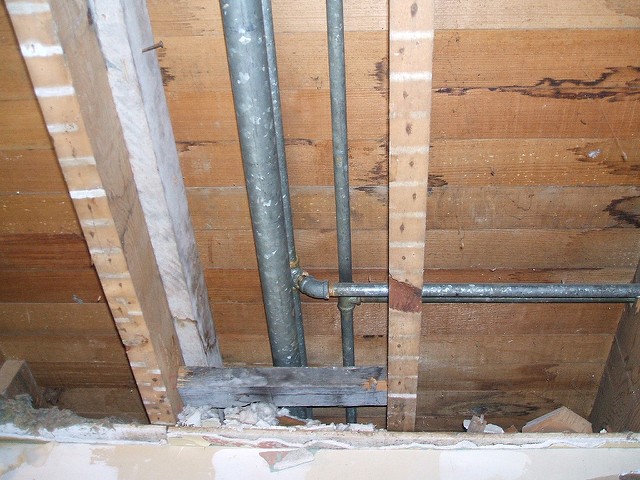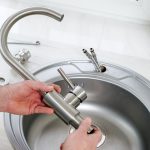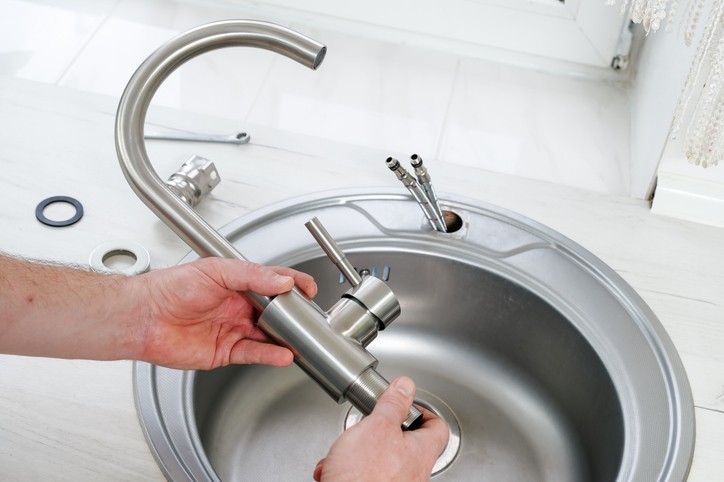Remember the good old days of playing hide ‘n seek? The thrill of finding the perfect spot, hearing the seeker’s footsteps approaching, and holding your breath so you don’t make a sound? Hidden Water Damage
It was great fun, especially in the dark. Now that you’re all grown up, you’re still playing the game, even if it is a different version. It’s called “trying to find where that drip-drip-drip sound is coming from or the cause of the water stain on your ceiling.” It’s a long name, but one that serves the purpose.

You see, water can be pretty good at hiding, sometimes causing serious damage before it’s discovered. But if you know where to look and what to look for, you can prevent water from ruining drywall, insulation, wood studs, your belongings, and more.
Beneath a window. Windows are one of the most common points of entry. As rain seeps in between the sash and the jamb, it can trickle down to the studs inside the wall, out of site and out of mind. If ignored, these repeated leaks can rot drywall and wood framing.
Painted windowsills. Speaking of windows, if yours are older and the sills have been painted time and again, water can seep into cracked paint and slowly eat away at the wood. Take a screwdriver and firmly press the tip into the wood along the sill. If the tip sinks in, you have water damage.
Beneath siding.Anywhere two siding panels meet or where siding abuts window trim, you have the potential for water intrusion. Unsealed gaps can allow water to trickle down beneath sections of siding and rot the sheathing. In fact, this damage can stay hidden until a homeowner decides to replace the siding – talk about unpleasant surprises.
Exterior doors. The threshold of an exterior door – even treated wood – is susceptible to saturation during a rainstorm. You may not notice the damage until the wood begins to rot and works the threshold loose.
Under the dishwasher. Dishwashers are designed to keep water inside the tub, but that doesn’t mean things can’t go wrong. For example, a slow leak can develop in the water supply line or the drain line, without you knowing until it’s time to repair or replace the dishwasher.
Under a toilet. Basic toilet installation includes a wax ring that fits between the base of the toilet and the flange that connects to the drainpipe. Because the wax is soft, it can wear down and leak over time. One telltale sign of a faulty ring is water pooling around the base of the toilet. On the other hand, you may not notice a thing while water continues to soak into the subfloor, slowly rotting it away. By then, you’ll likely notice the toilet wobble because the rotted floor is no longer steady.
Under sinks. Unless you routinely check for leaks under your sinks, you may not notice a small one until a musty odor alerts you that something is amiss. Such leaks can be further hidden from sight if you store items like cleaning supplies, rolls of paper towels, and toilet paper under a sink.
Behind a bath or shower surround. In addition to eroding caulk and grout, anywhere pipes connect to other pipes gives rise to a potential leak, one that can damage wood studs and framing materials behind the wall or surround.
Behind exterior faucets. Exterior faucet leaks are a challenge to discover since it can be difficult to get a secure connection between the faucet and water pipe just behind the siding. If a leak should develop, the water can trickle down the inside of the wall, damaging framing materials and sheathing.
How can Norhio Plumbing help? Here’s one surefire way. Let’s say you notice your water bill trending upward but you’re pretty sure water usage remains constant. In that instance, don’t run any water for a half hour. At the same time, take a water meter reading before and after the water hiatus. If it’s moved, you have a leak, and that’s when you need to contact Norhio Plumbing so we can locate and repair it. And that’s just one of the many plumbing services we provide.










Leave a Reply